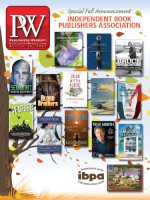Dan Simmons tackles Mount Everest in his new novel, The Abominable, with a mix of genres, an absence of certainty, and reams of research.
The Abominable is a blend of history, fictionalized biography, mystery, regional mythology, and an extreme experience—in this case, climbing Everest.
My interest is in exploring the precise point where solid history or expert biography collide head on with the boundary of what we cannot know about any event or person. This absence of certainty allows me to weave fiction within the small but inevitable ellipses or caesurae where not even the most diligent biographer or dedicated historian can go. Homer and Shakespeare taught us that “extreme experience” often offers the best glimpse of someone’s truest and deepest nature.
The characters in your novel follow in the footsteps of Mallory’s fatal bid to summit Everest in 1924. What was your research process?
My saturation research for The Abominable —scores of biographies, mountaineering books, diaries, letters, old maps, expedition records, 1920s climbing tools and boots and garb—was a true pleasure. Living in Colorado, I’ve camped, climbed, and fought mild oxygen deprivation at altitudes up to 14,000 feet, but that’s a fraction of what Mallory and my characters had to endure at 28,000 feet and above.
Climbing museums have allowed me to heft those 1920s five-foot-tall ice axes, look at those hobnailed boots that bled the early Himalayan climbers’ warmth into the cold, touch those 1924 ropes that snapped at the slightest fall, and feel the layers of silk, cotton, wool, canvas, and gabardine that these men wore to the top of the world, as if they were going for an autumn day’s walk in Kensington.
The novel deals with a woman climber in a way that can feel anachronistic to a modern reader. Were women really involved in mountain climbing in the early 20th century?
I confess that I hate anachronisms in historical fiction. Luckily, my female climber in The Abominable has the provenance of scores—hundreds—of capable and even expert “lady climbers” bagging high peaks from the 1860s on. Climbing mountains was a permissible hobby for the English upper class. Women climbers achieved early summitings of the Matterhorn and many other alpine peaks. More women than ever belong to today’s tiny club of the world’s most elite climbers.
There’s a wide range of thought on whether an audience or readership deserve to have all the mysteries resolved at the end of a story. What guides your choice to give or withhold answers?
The real test for me is how the reader feels after he or she has finished one of my books. If readers have no questions to ask, no conversations they want to start, no strong feelings they wish to share, then I’ve failed. But overall, as at the end of a life well lived, there should be a sense of completeness—of having known triumph and sorrow—as well as having some questions still unanswered. That and some sense of sadness that the characters are no longer there to spend time with. Finishing a good book, I think, should feel a bit like saying goodbye to old friends.



 Volume 260
Issue 34
08/26/2013
Volume 260
Issue 34
08/26/2013





